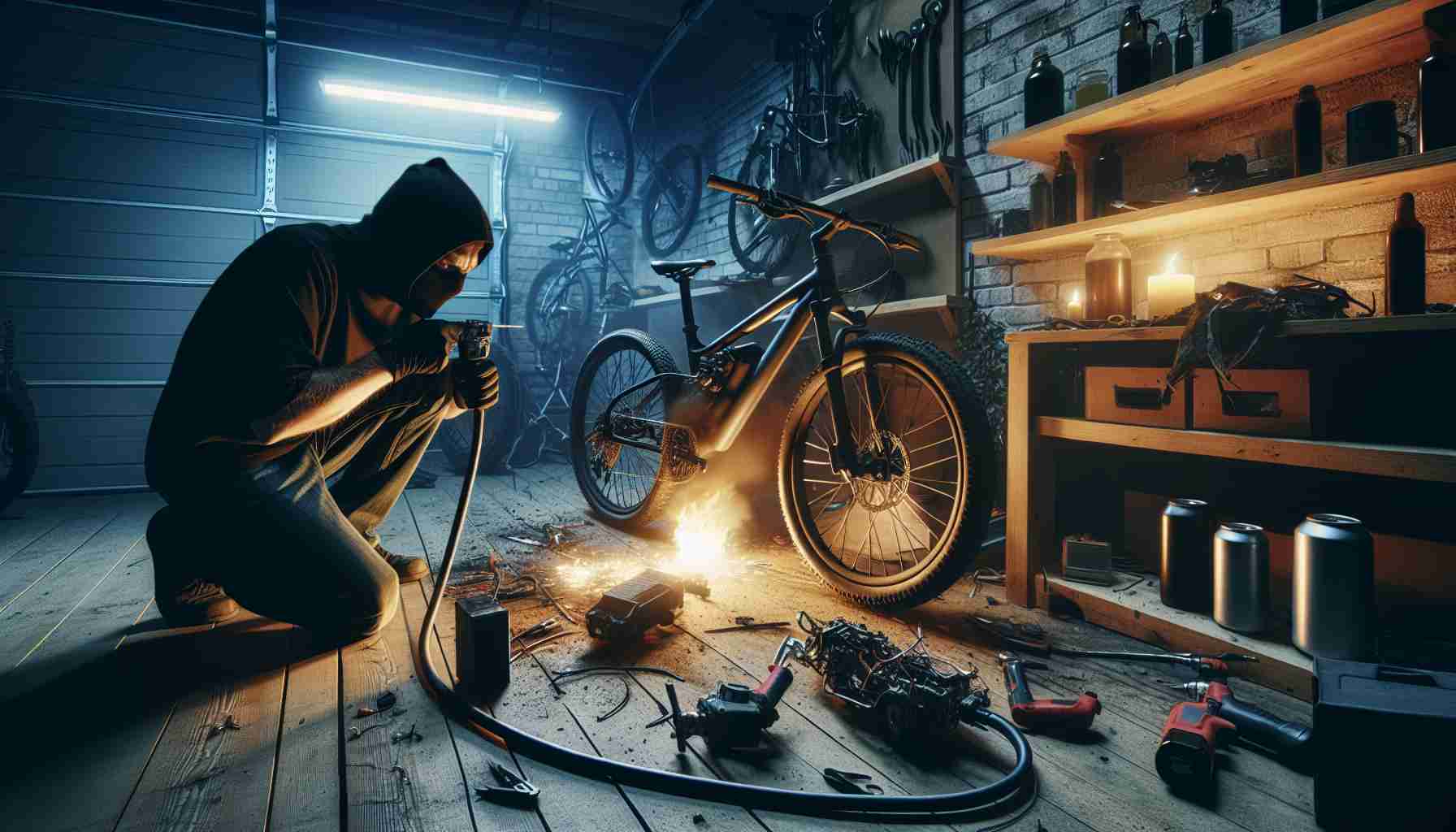- E-bikes, while seen as eco-friendly, pose a significant fire risk when modified improperly.
- DIY battery upgrades, aimed at boosting performance, can lead to dangerous outcomes.
- An incident with a homemade battery highlights the unpredictability and potential hazards of such modifications.
- Fire officials emphasize the need for increased awareness of e-bike safety.
- Safety should always be prioritized over performance enhancements in e-bike modifications.
- The incident serves as a vital reminder to balance innovation with caution in modern transportation.
A silent menace weaves its way through city streets, often unnoticed until its deadly potential erupts in flames. The humble e-bike, hailed as an eco-friendly revolution, is at the heart of a rapidly emerging threat. A seemingly innocuous modification can turn this hero into a villain of combustible misfires.
In the cramped corners of an average garage, eager hobbyists tweak their rides, swapping out parts for enhanced performance. But, as appeals for speed and range climb, ambition sometimes overreaches caution. This recent incident, overshadowed by acrid smoke and charred remnants, has laid bare the lethal risks of do-it-yourself battery upgrades.
The e-bike in question, once powered by a standard battery, had undergone a transformation. A homemade battery pack, crafted to replace its original counterpart, became the unsuspecting catalyst for chaos. With a chemistry as unpredictable as an alchemist’s cauldron, these improvised energy sources can lead to disastrous consequences if not handled with precision and expertise.
Within urban circles, the allure of heightened mobility often blindsiders common sense. Fire officials, now more vigilant than ever, spotlight a growing need for awareness about e-bike safety. This incident serves as a stark reminder: when treading the electrified path of technology, safety must remain paramount.
A gentle hum should not mask potential dangers lying dormant beneath the sleek, metallic veneer of e-bikes. As we embrace modern transportation, let our quest for innovation be tempered by the unyielding guard of caution. The allure of a faster ride must never outpace the fundamental need for safety.
The Hidden Dangers Electrifying Our Streets: Why Your E-Bike Might Be a Ticking Time Bomb
The Growing Popularity and Perils of E-Bikes
E-bikes are celebrated for providing environmentally friendly and efficient transportation, especially in congested urban areas. However, this modern marvel harbors risks, primarily due to the rush for increased performance through amateur modifications. The focus here revolves around the emergent danger of self-upgraded e-bike batteries, leading to incidents like fires and accidents.
The Core Issue: DIY Battery Modifications
Electrically powered bikes generally use lithium-ion batteries, recognized for their high energy density. When hobbyists seek greater speed and longer range, they often resort to custom battery packs. These homemade solutions, while cost-effective and seemingly practical, come with substantial risk. Lithium-ion batteries require precise handling and engineering expertise; errors can lead to overheating, short circuits, and potentially catastrophic fires.
Key Considerations:
– Thermal Runaway: A failure condition where the battery temperature increases uncontrollably, potentially leading to explosions.
– Improper Installation: DIY enthusiasts can accidentally damage cells, create weak connections, or use substandard components.
– Lack of Safety Certifications: Unlike commercial products, homemade packs don’t undergo rigorous safety testing.
Global Concerns and Urban Safety
Globally, cities are witnessing a surge in e-bike fires. For instance, New York City reported several fires attributed to faulty e-bike batteries, prompting calls for regulatory action. These concerns are not limited to isolated incidents but echo a broader pattern requiring urgent attention and standardized regulations.
Safety Recommendations:
– Professional Upgrades: Always select certified batteries and have upgrades done by professionals.
– Education Campaigns: Improving public awareness on the dangers of DIY modifications through community programs and workshops.
– Regulatory Measures: Implement stricter laws on battery quality and performance standards.
The Future of E-Bike Innovation and Safety
As the popularity of e-bikes grows, so does the opportunity for improved safety standards and innovations in battery technology. Solid-state batteries, which are inherently safer, are under exploration and hold potential to revolutionize the industry by reducing risks associated with current lithium-ion technologies.
Related Q&A
Q: Why are DIY battery upgrades dangerous?
A: DIY upgrades typically involve using components that could be incompatible or poorly constructed, leading to failures such as overheating, short circuits, and fires.
Q: What can authorities do to mitigate these risks?
A: Authorities can ramp up safety regulations, conduct regular safety inspections, and promote public awareness on the importance of using certified professionals for e-bike modifications.
Q: How can the e-bike industry enhance safety measures?
A: Innovating more reliable and safer battery technologies like solid-state batteries, implementing better thermal management systems, and ensuring more comprehensive safety certifications.
Additional Resources
For more insights on e-bike safety and technology, visit:
CNET
The Verge
Embrace innovation, but remain vigilant—safety must never be sidelined in the pursuit of progress.
